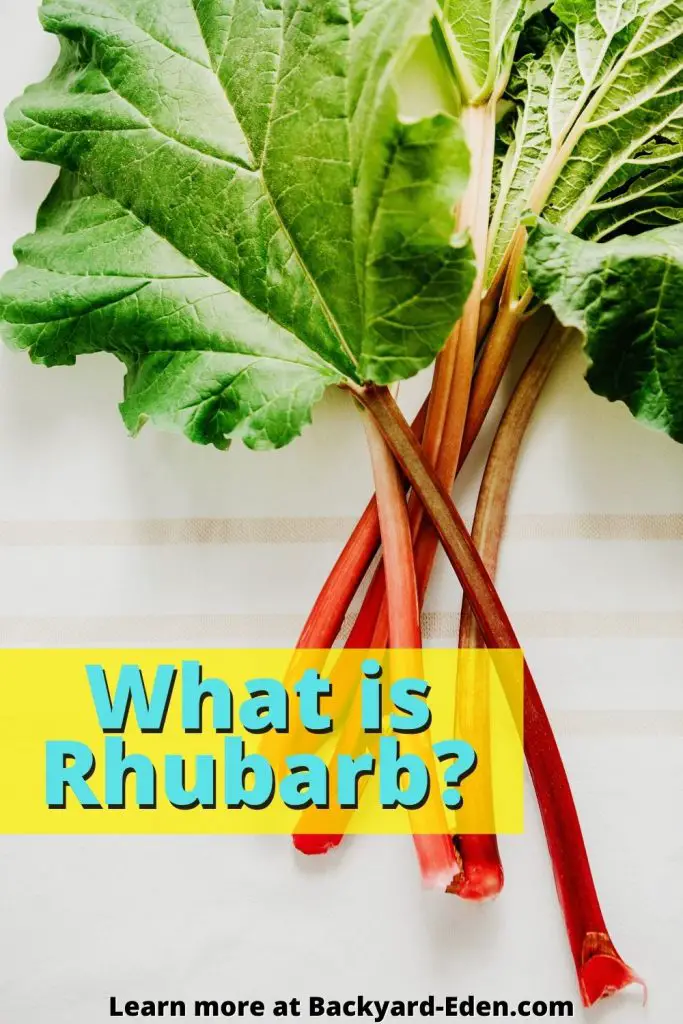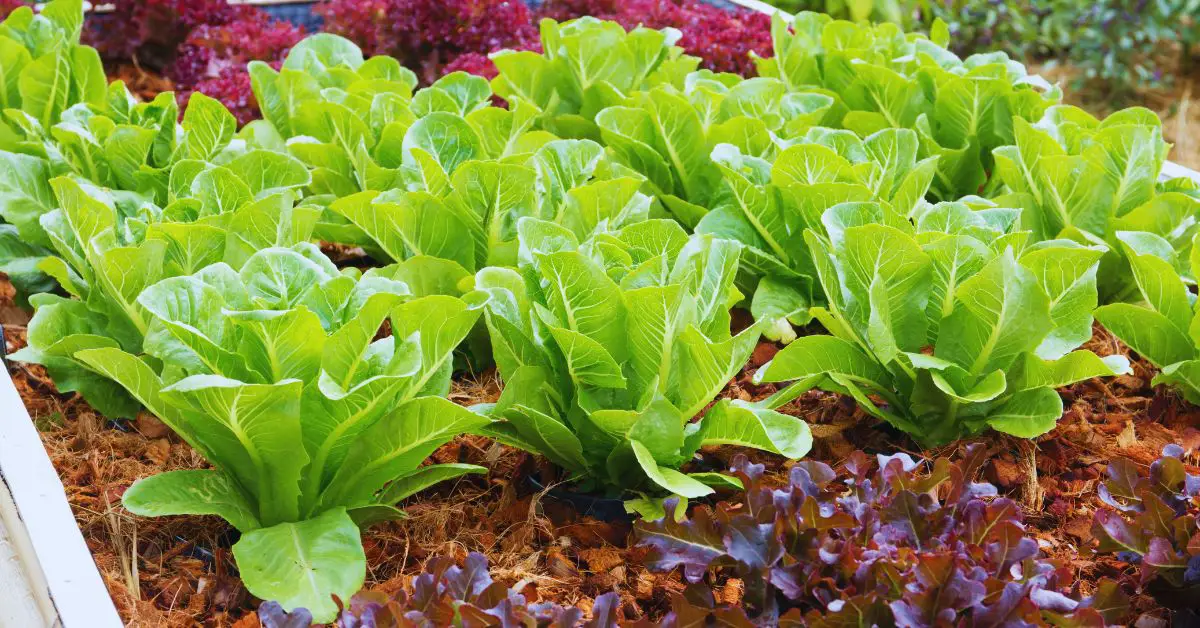What is Rhubarb
Rhubarb is a perennial plant that has been used in cooking for centuries. It’s often found in desserts like pies and tarts, but can also be enjoyed as an ingredient in savory dishes such as sauces and soups. Rhubarb plants are very common, so chances are you’ll have one growing nearby if you don’t already!
Rhubarb is a vegetable best known for accompanying fruits in cobblers and pies. While the veggie is more versatile than you may think, it’s good to have little information before starting to cook with rhubarb, right? And there’s a chance you might’ve noticed that people only use just the stalk – because leaves are actually toxic! But this shouldn’t stop any of us from enjoying their bright-red plant. Whether we eat them fresh or frozen raw or cooked they can add tart flavor to any summer dish.
What is Rhubarb?
Rhubarb is a vegetable that functions like fruit. It’s very acidic, and it’s typically associated with sweet dessert recipes which have an almost savory flavor to them because of the acidity. The stalks grow straight into the air with broad green leaves on top ranging in color from lime-green to deep reds. Red doesn’t indicate ripeness – instead it references which variety of rhubarb you’re looking at!
Rhubarb grown inside under artificial lights has a brighter red hue and sweeter flavor than traditional varieties outside due to less exposure during growth stages where weather can be more extreme for plant life not living indoors or directly outdoors.
What is the health benefits?
Rhubarb is a great option for those looking to add more variety in their diet. One cup of diced rhubarb has only 26 calories, while one stalk comes in at 11 and overall it’s very low-fat and sugar! There isn’t much difference between fresh or frozen rhubarb either so both are solid options when you’re trying to eat healthy.
Rhubarb also contains anthocyanin & lycopene which help keep your heart healthy and prevent cancer – two things that we all need with the hectic lives that we lead nowadays! Rhubarb is rich in fiber, calcium, vitamin K and vitamin C, which is crucial for strong bones and iron.
There has even been some medical professionals who have said that you can eat it raw but because of its extremely tart flavor, that most prefer to cook it with some sugar to curt the strong flavor.
What does Rhubarb taste like?
Rhubarb is a very tart vegetable that can be used as the perfect addition to your recipe or surprise everybody with its sourness. You should use it sparingly because if you put too much, people will find themselves overwhelmed by how tangy and sour rhubarb can become without any other flavors in there.
When is Rhubarb in Season?
Rhubarb is a tart and slightly sweet vegetable that comes into its prime during the spring. If you’re looking for fresh, flavorful rhubarb that will taste best when cooked right away then look out on your local farmers markets. The plants grow through summer but are most abundant in April to June with peak flavor coming from early May onwards.
Is Rhubarb poisonous?
Rhubarb leaves are very high in oxalic acid, which quickly causes kidney failure. About 25 grams of pure oxalic acid is the average amount needed to kill a human. That said, rhubarb leaves aren’t pure oxalic acid and it would take about 11 pounds of them to secure that much!
How to Cook Rhubarb
In order to prevent the acidity in rhubarb from leaching harmful chemicals into your food, make sure that you’re cooking with a non-reactive pan such as aluminum or stainless steel. When it comes time for cutting up the vegetable, only use stalks and cut away any leaves as soon after purchase as possible – they can stay fresh in the refrigerator for about three weeks!
The right pan is key to a delicious and safe rhubarb recipe. The type of cooking oil you’re using also plays an important role, so be sure to use the best for your needs! When cutting it up, don’t forget that only the stalks should go into what will become our beautiful dish-the leaves are too high in oxalic acid content which would ruin everything.
To avoid this unpleasant outcome just as soon as you get home from buying some fresh produce take care of those pesky leaves by tearing them off or chopping them away with scissors if they won’t come out easily enough on their own. And lastly we need storage space-or else all these little guys will spoil before we know it (and who wants that?
For a simple sauce, the stalks can be cut into pieces before adding ¾ cup of water to every four cups of cut rhubarb in a pot. The contents are brought to a boil and then simmered until the vegetable breaks down and becomes soft. Adding sugar balances out any tartness that may linger from cooking as well for extra flavor after being refrigerated or frozen if desired! This delicious sauce is great over ice cream, pancakes waffles, or even on fresh fruit so you get both sweet with sour all at once.
Can Rhubarb be frozen?
Rhubarb is a vegetable that can be frozen for later use. To freeze the rhubarb, remove and dispose of leaves, cut stalk into pieces-and place on cookie sheet in freezer until solid. The vegetables can then go to an airtight bag or container before being used in any quantity desired; it will last up to one year!
How to Grow Rhubarb
This perennial plant – if cared for properly- can produce seasonal rhubarb stalks up to nine years. They grow into big plants so having ample room between them is important in order to allow the plants thrive and not be crowded together, but they are also very tolerant of other vegetation growing nearby which makes it a good choice when planting next to shrubs or trees as well.
Rhubarb requires fertilizer and water throughout their season in order keep producing more leaves/stalks all summer long; this will help them survive through the hot summers without wilting away like many other fruits would do too once ripe! You won’t get your first yield until after you’ve been caring for these perennials until they are established enough (about 1 year). They won’t start making new growths or crops of fruit unless conditions improve significantly again – which usually means rain!
What are the best growing conditions for rhubarb?
Rhubarb thrives in an open, sunny site with moist soil. Too much water will cause it to rot during the winter months so avoid planting rhubarb near any areas that are prone to late frosts as its young stems may be damaged when they come out of dormancy at this time. Rhubarb can also grow from seed but you’ll probably find a dormant crown is cheaper and easier than growing them yourself!
Is rhubarb hard to grow?
Rhubarb is one of the easiest of all perennial crops. Once established, very little maintenance is needed. A healthy and happy plant will produce for decades. Grow rhubarb in a sunny location that gets full sun and where the soil is rich and lightly moist.
Does rhubarb come back every year?
Rhubarb is a perennial vegetable that will come back year after year. You can harvest fresh and delicious rhubarb for several years off of the initial planting. If you are in hotter climates (zones 9 and up), you will most likely need to grow rhubarb as an annual by planting a new set of plants each year.
How many years does a rhubarb plant live?
Rhubarb can live up to and sometimes longer than 10 years. Rhubarb is a perennial that doesn’t take a lot of upkeep and can produce tasty food for you year after year. Make sure to give some compost every year to provide it with some food so that it can keep you in fresh rhubarb stalks.
How often should I water rhubarb?
You should water Rhubarb plants daily at the root zone while young or new plants are being established (during the first 2-4 weeks). Rhubarb plants should be watered during dry weather to maintain healthy foliage throughout the summer. During dry weather, give your rhubarb plants a deep soaking by turning a hose on to drip at the base of the plant for a couple hours every 7 to 10 days should be adequate.
Click this link if you want to learn more about how to grow rhubarb.
In Conclusion
If you like this article about what is rhubarb, please share it on social media and with friends. For all the latest recipes, container gardening tips and growing guides subscribe to our newsletter in sidebar.
Also, check out our article on How to grow Rhubarb or Is Rhubarb Poisonous
Be sure to Like us on Facebook and Follow us on Instagram, Twitter, and Pinterest!






